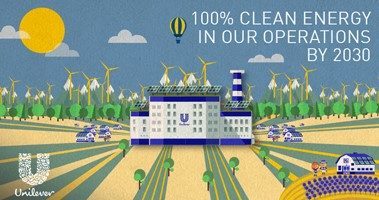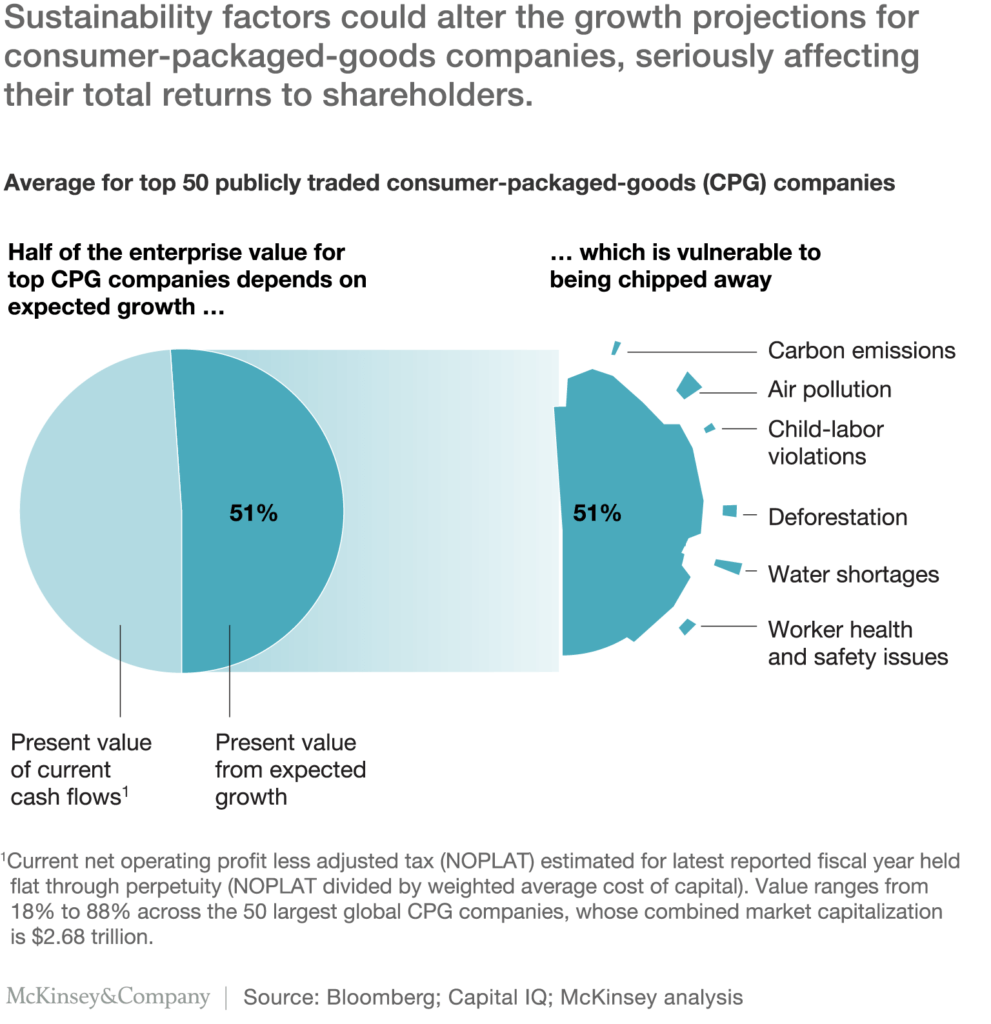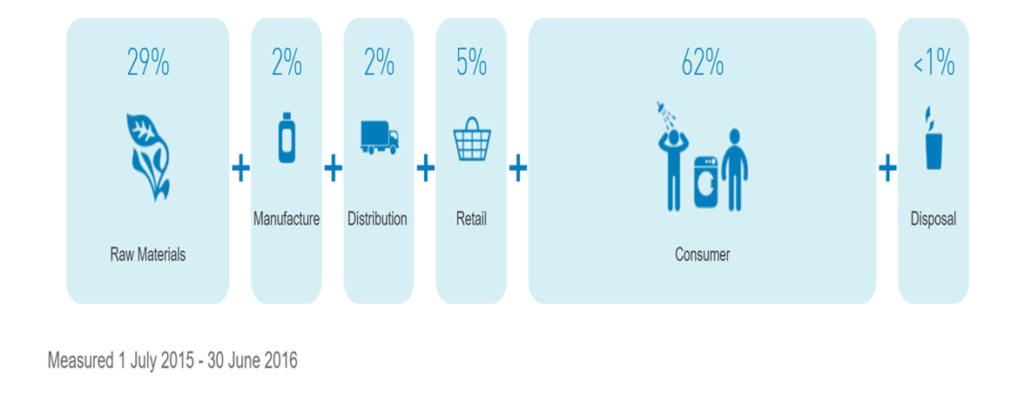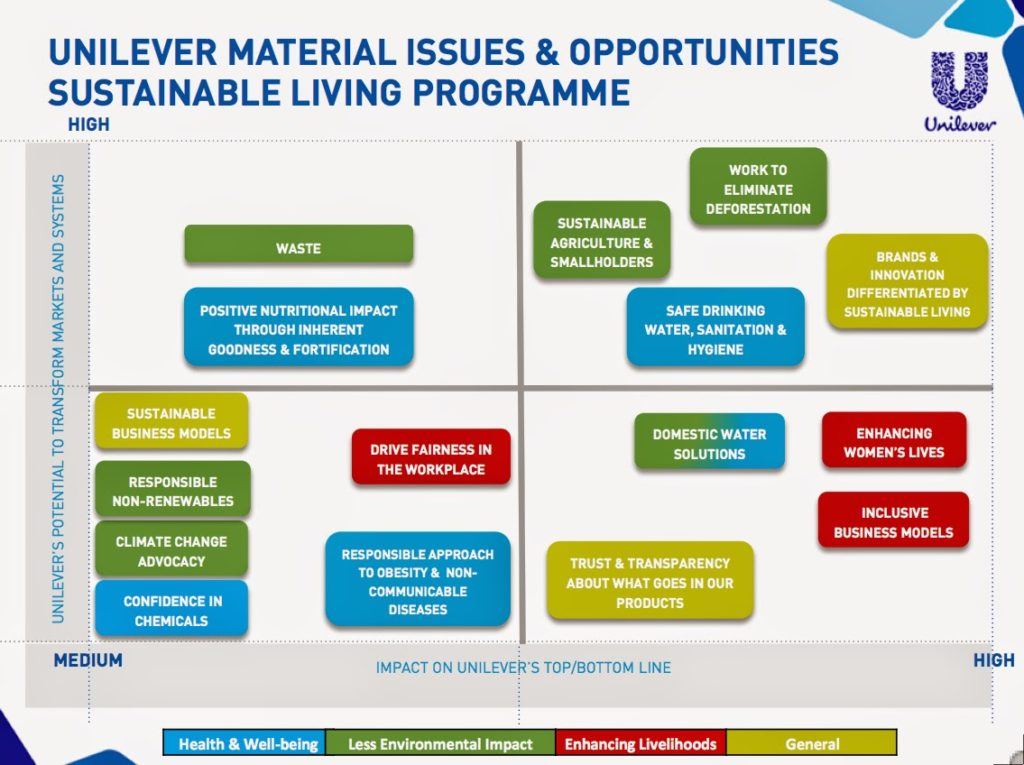Unilever’s climate-proofing strategy

Unilever whose supply chain has been significantly impacted by climate change has commendable initiatives lined up to fight the climate change battle.
Unilever, which has been affected by the rising problems of climate change has actively stepped forward to combat the challenges. Climate change leadership has put Unilever on the ‘A List’. Unilever’s approach to combating climate change has been recognized for the fifth consecutive year by the latest leadership index published by CDP (formerly the Carbon Disclosure Project)[1].
Unilever’s supply chain and bottom-line have been significantly impacted by climate change
CEO of Unilever, Paul Polman believes that climate change affects everything from Unilever’s employees to the price of products to the bottom line. Disasters linked to changing climate have cost Unilever more than $400 million a year[2]. Some growing challenges include
- Increasing raw materials cost: Unilever sources raw materials from tropical regions and deforestation in Latin America, Africa, and Asia is increasing carbon emissions, intensifying erratic weather and hurting business[3].
- Changing supply and demand patterns: Climate change is affecting rainfall patterns and driving water scarcity in highly populated regions. When so many of Unilever’s products require water to use – whether to make a cup of tea or take a shower – this presents another immediate risk of climate change[4]. In future, more extreme and unpredictable weather patterns may affect not only consumer preferences but also the types of products they seek in response to resource and economic constraints. Consumers may seek products that are more energy and water efficient to adapt to decreasing water availability and energy shortages[5].
- Reduced productivity: Erratic rainfall, high temperatures, resulting pests, and diseases create a negative effect on the volume and quality of products produced[6].
In summary, climate change affects the entire supply chain of Unilever, posing threat to growth and bottom line.
Unilever’s 2016 greenhouse gas (GHG) footprint across the supply chain – consumers contribute to the highest share of footprint[7]
Unilever is adopting a multi-pronged approach to tackling climate change across the supply chain
Unilever’s plans
- Eliminate coal from the energy mix by 2020.
- Tackle climate change by halting deforestation, championing sustainable agriculture and food security. For instance, Unilever uses a software tool, developed with the University of Aberdeen, to collect data on whether farmers in its supply chain are using sustainable practices. Unilever offers them the tool for free, with the aim of procuring 100 percent of its agricultural content from sustainable sources by 2020[8].
- Become carbon positive by 2030. Source 100% of energy from renewable sources. Support the generation of more renewable energy, making surplus available to markets and communities[9].
- Make manufacturing and distribution eco-efficient. Manufacture as efficient as possible – using fewer resources and generating less waste. Eco-efficiency targets focus on water, waste, energy, and carbon-di-oxide and cover 263 manufacturing sites in 71 countries[10].
- Design products which are less GHG intensive. Some innovative products include climate-friendly ice cream freezers, compressed deodorant sprays, and concentrated laundry detergents which wash clothes at lower temperatures[11].
- Help consumers use less water, less energy, and recycle more. Advocate public policy to tackle climate change[12].
Source: Unilever
Other initiatives that Unilever could adopt
Introduce business targets and incentives based on tackling climate change
Unilever could consider motivating its business divisions by attaching incentives to the agenda of tackling climate change. Divisions adopting the most sustainable practices and reducing carbon footprint could be rewarded financially and non-financially. On the contrary, divisions contributing to increasing climatic challenges could be monitored and penalized.
Extend support to suppliers
Unilever’s leadership and advocacy can be extended to instill discipline and commitment among its many suppliers. Unilever could make a greater effort in setting an example to the smaller suppliers, supporting them with the handholding required to embrace climate change initiatives and pushing them to commit to climate change goals through support such as financing, technology and business continuity. It could also choose to be stringent in working with only those suppliers who commit to the climate change agenda through sustainable practices.
Market climate change imperatives and educate end consumers
Unilever’s advocacy has been strong, but it has not been consistent across all its brands. Unilever could promote greater awareness among its 2.5 billion customers to reduce actions causing climate change through thought-provoking commercials and product packaging. Unilever has 400+ brands and can make a signification difference in customer education as more of its brands embrace customer advocacy. Climate change campaigns on social media will also lead to behavioral change. Periodic communications will serve to strengthen advocacy while improving the reputation of Unilever.
Improving the future
- In addition to following the aforesaid value protection measures to fight climate change, how can Unilever turn climate change into an opportunity for value generation?
- How can Unilever inspire conversations and actions among organizations and governments who are indifferent to fighting climate change?
Word count: 782
Endnotes
[1] “Climate Change Leadership Puts Unilever On ‘A List’ For Fifth Year”. 2017. Unilever Global Company Website. https://www.unilever.com/news/news-and-features/Feature-article/2016/climate-change-leadership-puts-unilever-on-A-List-for-fifth-year.html
[2] “CEO: Climate Change Costs Unilever €400 Million”. 2017. NL Times. https://nltimes.nl/2015/05/21/ceo-climate-change-costs-unilever-eu400-million
[3] Catanoso, Justin. 2017. “UNILEVER CEO: We Need To Do More To Fight Climate Change”. Business Insider. http://www.businessinsider.com/unilever-ceo-speaks-on-climate-change-2014-12
[4] “Climate Action Demands Business Action And Policy Change”. 2017. Unilever Global Company Website.https://www.unilever.com/news/Join-in/2016/faster-and-further-climate-action-demands-business-action-and-policy-change.html
[5] “Adapting to Climate Change: A Guide for the Consumer Products Industry.” 2017.Bsr.Org. https://www.bsr.org/reports/BSR_Climate_Adaptation_Issue_Brief_CP.pdf
[6] “Identifying Climate Risks In The Supply Chain: New Insights, New BSR Initiative | Blog | BSR”. 2017. Bsr.Org. https://www.bsr.org/our-insights/blog-view/identifying-climate-risks-in-the-supply-chain-new-insights-new-bsr-initiati
[7] “Our Greenhouse Gas Footprint”. 2017. Unilever Global Company Website. https://www.unilever.com/sustainable-living/reducing-environmental-impact/greenhouse-gases/Our-greenhouse-gas-footprint/
[8] “Starting At The Source: Sustainability In Supply Chains”. 2017. Mckinsey & Company. https://www.mckinsey.com/business-functions/sustainability-and-resource-productivity/our-insights/starting-at-the-source-sustainability-in-supply-chains
[9] “Our Carbon Positive Ambition”. 2017. Unilever Global Company Website. https://www.unilever.com/sustainable-living/reducing-environmental-impact/greenhouse-gases/our-carbon-positive-ambition/
[10] Unilever global company website. (2017). Eco-efficiency in manufacturing. [online] Available at: https://www.unilever.com/sustainable-living/reducing-environmental-impact/eco-efficiency-in-manufacturing/ [Accessed 9 Nov. 2017]
[11] “Innovating To Reduce Greenhouse Gases”. 2017. Unilever Global Company Website. https://www.unilever.com/sustainable-living/reducing-environmental-impact/greenhouse-gases/innovating-to-reduce-greenhouse-gases/.
[12] “Reducing Environmental Impact”. 2017. Unilever Global Company Website. https://www.unilever.com/sustainable-living/reducing-environmental-impact/






Unilever has recognized that the long-term viability of the business depends substantially on managing climate change. However, many companies still struggle to take the long-term approach and sacrifice short-term gains.
I believe that in order for companies to implement climate-proofing strategies, sustainability performance metrics should be included as part of the compensation. This would provide incentive for leadership to think not only about short-term results, but about the future of the business [1]. Additionally, the cooperation between companies and their suppliers would be the key driver to encourage smaller players to think about climate. Large companies, such as Unilever, have strong bargaining power and can influence their supplier to implement practices that protect the climate. Unilever, could work with its competitors e.g., P&G or Mars, to define industry standards for climate change practices.
[1] PwC. “Retail & Consumer Insights: Megatrends in the retail & consumer products industry”. (June 2015). Available online: https://www.pwc.com/us/en/retail-consumer/publications/assets/rc-insights-climate-change.pdf
Unilever can make climate change an opportunity to generate value by using more recycled materials and providing cash back or discounts to those retailers who return recycled goods to Unilever. Retailers could in turn provide a discount to consumers who return used Unilever product packaging to stores for distribution back to Unilever and eventual recycling. This creates value for retailers and consumers via discounts, and it also creates value for Unilever in potentially reduced costs of materials.
Unilever has a large platform by which it can motivate organizations and governments to act against climate change. One way in which it might more effectively do so is by hiring celebrity spokespeople who have good relationships with the countries in which Unilever is negotiating.
I found the idea that nearly the enterprise value of CPGs to be driven by expected future growth to be very interesting. A lot of the strategies the traditional CPGs and Unilver have historically taken have been on the back-end – from procurement to operations to distribution – I’m curious if these companies, particularly with their marketing might, can do more to impact end consumer behavior. They have a keen understanding of order frequency and behavior, and have nudged consumers along the way to buy more, trade up, etc. I wonder if they can’t put those same learnings and capabilities to helping consumers trade off between more and less environmentally friendly behaviors.
Great article! It is really interesting to see a large company such as Unilever actually taking steps to address climate change issues that are so relevant today. I am, however, a bit skeptical to which extent this is a real policy that permeates throughout the company and goes all the way to the individual brands or just a PR stunt. Because of the decentralized model Unilever has, actually enforcing that the individual business units and brand implement and prioritize climate change related initiatives is really daunting. As conscious consumers, it is our job to verify if Unilever is actually living by the standards it has imposed on itself and held it accountable to achieve the long term goals it has set.
Gayathri, I learned a lot in how Unilever puts efforts to transform its supply chain to avoid the environmental risks. Thank you for your analysis and perspective! I was especially impressed to know that Unilever practices eco-efficiency methods in 263 manufacturing sites in 71 countries. Scaling the practice is hard given that the product processes can vary tremendously from countries to countries. I feel that the global scale of this effort makes them a committed leader in the industry for the environment.
Regarding your discussion points in how Unilever can turn climate change into an opportunity for value generation, I think that Unilever, the leader of the CPG industry taking these measures to combat environmental risks is a competitive advantage. A lot of consumers are also now aware of environmental issues, and Unilever truly practicing these solutions is a way that they are leading a transformational change for the industry. As a consumer, knowing that Unilever carefully picks suppliers who pass their standard for sustainable practices is a way that I become loyal to the brand. Also, when Unilever invests in environmentally-friendly practices, this become an industry norm – other companies must follow the similar practices to well compete with the company. The impact Unilever puts to consumers and the industry is tremendous in my opinion.
To your second question in how Unilever can inspire conversations and actions among organizations and governments who are indifferent to fighting climate change, this is a challenge that the private sector faces. One way is that Unilever can conduct a research in the eco-friendly supply chain model, and publish it to scale the practice and technology it employs. Leveraging the research team, this is the way to move the governments and other companies to start the discussion. It is a challenge to involve the governments to take actual measures, however, with other large companies in CPG joining Unilever, I think that the impact is elevated to involve the government.
Gayathri,
I enjoyed reading your post. Unilever has been a topic of discussion in so many of our classes throughout the semester and it was interesting to learn even more about the company. Overall, I agree that Unilever is making commendable efforts to fight the climate change battle.
I felt that the data that they are collecting on whether farmers in their channel are using sustainable practices is a compelling strategy. For this to be effective, they will need to gather a large amount of data for that information to be meaningful. In a nutshell, I would be doubtful of the success of this initiative; however, I am optimistic because I feel as though they have a thoughtful execution approach which they plan to use. I feel as though offering the tool for free makes their objectives a bit more feasible. I think that there will be a way for them to share some of this data with the user so that they are able to market the perks of collaborating with Unilever to focus on sustainability.
The incentives of Unilever and farmers are aligned because both of their businesses are so deeply impacted by climate change. Unilever has scale which helps shield them from particularly negative things such as a natural disaster which happens with greater regularity these days do to climate change. Farmers don’t have that same scale and therefore the risk to their business is significantly greater and this will make them more inclined to form partnerships and collaborate with Unilever to de-risk their business.
Overall, I have confidence in the scale and depth of relationships which Unilever has which I believe position them well to protect their company against climate change.
Thank you for the very thought-provoking read. I hope that we have an opportunity to discuss further.
Best,
Triston